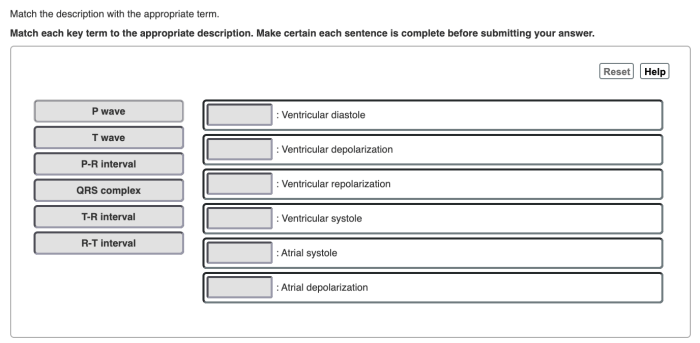Match each participial phrase with the appropriate sentence – Matching participial phrases with sentences is a crucial skill for understanding the structure and meaning of sentences. This guide provides a comprehensive overview of participial phrases, their identification, and strategies for matching them to sentences effectively.
Participial phrases are groups of words that include a participle (a verb form that functions as an adjective) and any modifiers or objects. Understanding the meaning of both the participial phrase and the sentence is essential for correct matching.
Identifying Participial Phrases

A participial phrase is a group of words that includes a participle (a verb form ending in -ing or -ed) and any modifiers or objects. Participial phrases can function as adjectives or adverbs within a sentence.
Here are some examples of participial phrases in different forms:
- Present participle: running, jumping, eating
- Past participle: walked, talked, written
- Perfect participle: having walked, having talked, having written
To recognize a participial phrase within a sentence, look for a group of words that includes a participle and that modifies a noun or verb.
Matching Participial Phrases to Sentences: Match Each Participial Phrase With The Appropriate Sentence

Matching participial phrases to appropriate sentences requires an understanding of the meaning of both the participial phrase and the sentence. The participial phrase should logically modify the noun or verb in the sentence.
Here are some strategies for determining the correct match:
- Read the participial phrase and identify the participle and any modifiers or objects.
- Read the sentence and identify the noun or verb that the participial phrase could modify.
- Determine whether the participial phrase logically modifies the noun or verb.
Examples and Table Structure, Match each participial phrase with the appropriate sentence
| Participial Phrase | Sentence | Match | Additional Information |
|---|---|---|---|
| Running quickly | The dog ran across the field. | Yes | The participial phrase modifies the noun “dog”. |
| Having eaten dinner | I went to bed. | Yes | The participial phrase modifies the subject “I”. |
| Excited about the party | The children ran into the house. | No | The participial phrase does not logically modify the verb “ran”. |
Additional Considerations
Matching participial phrases can be challenging when the sentence is complex or ambiguous. In such cases, it is important to consider the context of the sentence and the overall meaning of the passage.
Here are some tips for handling ambiguous or complex sentences:
- Read the sentence carefully and identify the main idea.
- Identify the noun or verb that the participial phrase could modify.
- Consider the context of the sentence and the overall meaning of the passage.
FAQ Explained
What are the different types of participial phrases?
There are three types of participial phrases: present participial phrases, past participial phrases, and perfect participial phrases.
How do I identify a participial phrase in a sentence?
A participial phrase will typically start with a participle and will function as an adjective in the sentence.
What are some tips for matching participial phrases to sentences?
Consider the meaning of the participial phrase and the sentence, and look for a logical connection between the two.
